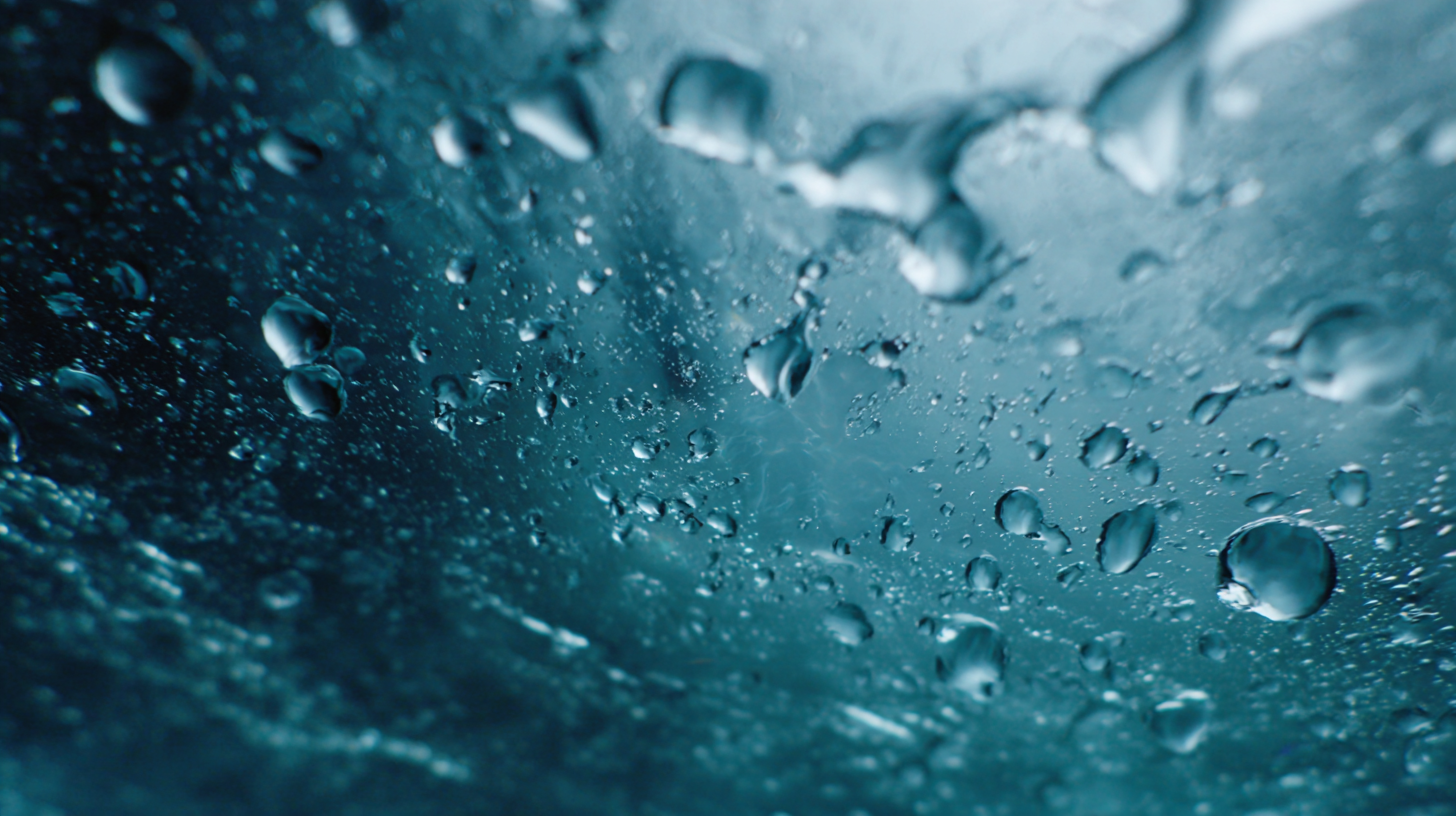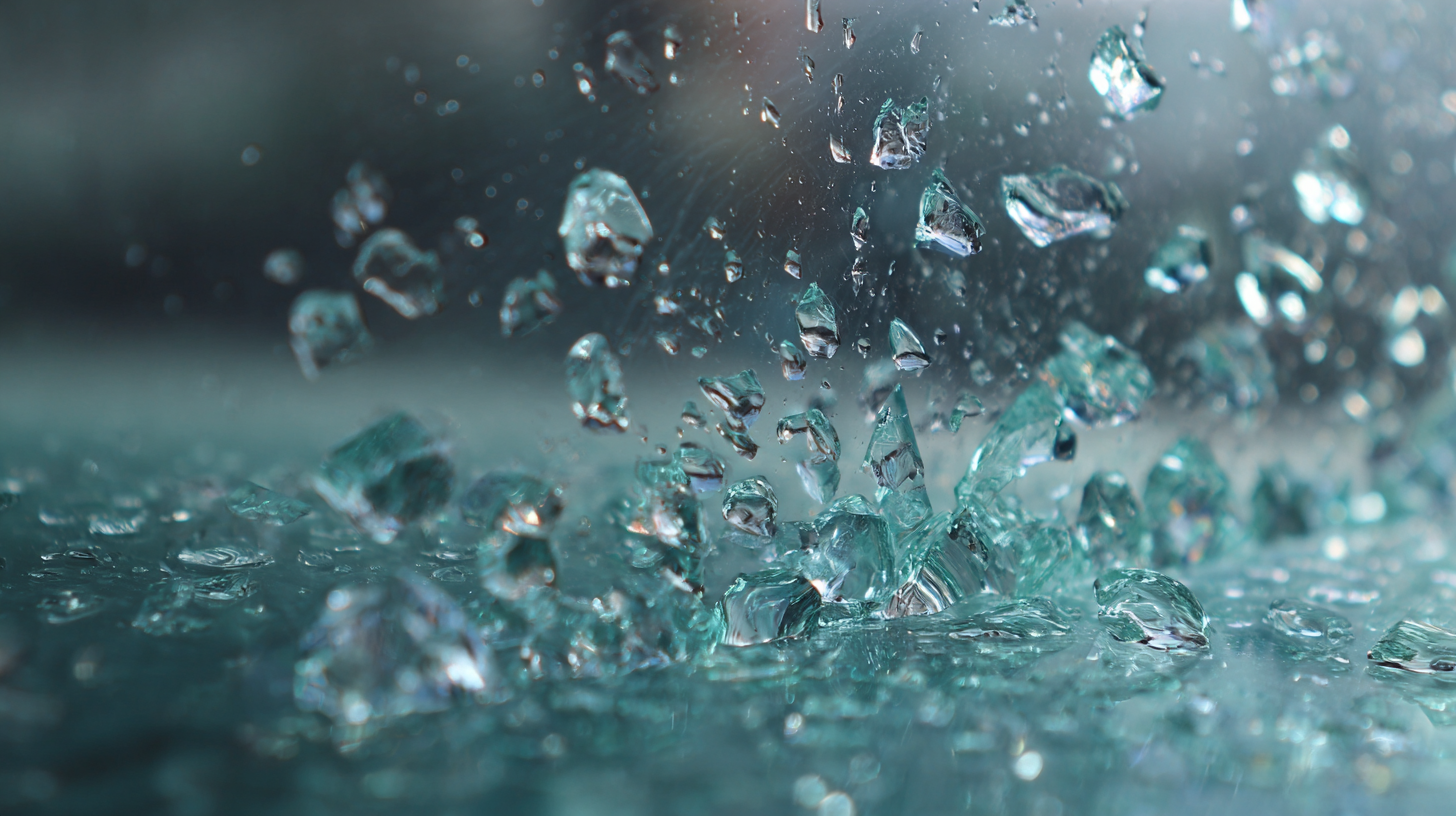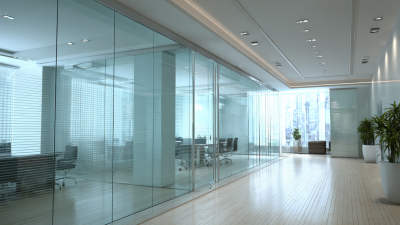
The advent of Waterproof Glass marks a significant evolution in the realm of design and durability, opening up new possibilities for architects, designers, and consumers alike. This innovative material not only enhances the aesthetic appeal of various applications but also offers unparalleled functionality that withstands the test of time and environmental challenges.
 From skyscrapers that shimmer in the rain to sleek bathroom fixtures that maintain their clarity and style despite humidity, Waterproof Glass is redefining the boundaries of interior and exterior design. Its versatility extends to various sectors, including automotive, electronics, and even art installations, where resilience and elegance are paramount.
As we delve deeper into the features, benefits, and potential applications of Waterproof Glass, it becomes evident that this remarkable material is not just a trend but a cornerstone of future design principles that prioritize both form and functionality.
From skyscrapers that shimmer in the rain to sleek bathroom fixtures that maintain their clarity and style despite humidity, Waterproof Glass is redefining the boundaries of interior and exterior design. Its versatility extends to various sectors, including automotive, electronics, and even art installations, where resilience and elegance are paramount.
As we delve deeper into the features, benefits, and potential applications of Waterproof Glass, it becomes evident that this remarkable material is not just a trend but a cornerstone of future design principles that prioritize both form and functionality.
Waterproof glass represents a remarkable advancement in material science, offering numerous key properties that enhance its functionality and appeal. Firstly, the inherent waterproof nature of this glass ensures that it is resistant to moisture infiltration, making it an ideal choice for environments prone to high humidity or water exposure. This characteristic not only prevents the growth of mold and mildew but also contributes to the longevity of fixtures and furnishings, ensuring that their performance remains uncompromised over time.
In addition to its moisture-resistant qualities, waterproof glass boasts impressive durability. It is engineered to withstand extreme temperature variations and mechanical stress, reducing the likelihood of cracking or shattering. This resilience makes it suitable for a variety of applications, from architectural designs to consumer products, where both aesthetics and safety are paramount.
Furthermore, the clarity and brilliance of waterproof glass elevate design possibilities, allowing for seamless integration into modern spaces while maintaining a striking visual appeal. Through these properties, waterproof glass is poised to revolutionize design standards, blending functionality with elegant aesthetics.
Waterproof glass is rapidly gaining attention in modern design, emerging as a pivotal material that combines aesthetics with resilience. According to a recent report by the Global Water-Resistant Glass Market, the industry is projected to grow at a CAGR of 7.5% from 2023 to 2030, driven by increasing consumer demand for durable and functional design solutions. This innovative material is not only ideal for architectural elements such as façades and windows, but it is also finding applications in everyday products, enhancing their longevity and usability.
In the realm of innovative design, waterproof glass is being used in diverse applications ranging from smart home devices to luxury bathrooms. The incorporation of this material allows designers to create seamless, easy-to-clean surfaces that resist moisture and stains, which is especially beneficial in high-humidity environments. Furthermore, studies indicate that waterproof glass can significantly extend the lifespan of products, reducing maintenance costs and environmental impact. As more designers embrace its versatility, waterproof glass stands to redefine contemporary aesthetics and functionality in a myriad of settings.
| Application Area | Description | Advantages | Future Potential |
|---|---|---|---|
| Architectural Design | Used in building facades and windows to enhance aesthetics while providing water resistance. | Durability, easy maintenance, and resistance to weather conditions. | Smart integration with sensors for climate control. |
| Consumer Electronics | Incorporated in smartphones and tablets to prevent water damage. | Improved longevity of devices and enhanced user confidence. | Integration with foldable screens and modular designs. |
| Interior Design | Utilized in bathrooms and kitchens for decorative panels and tiles. | Stylish look with easy cleanup and water resistance. | Potential for smart glass features like privacy on demand. |
| Automotive Industry | Used in windshields and displays to improve safety and visibility. | Enhanced clarity in various weather conditions. | Integration with advanced driver-assistance systems. |
| Healthcare | Utilized in medical devices and surfaces to maintain hygiene and prevent water damage. | Improved sterilization capabilities and robustness. | Potential for use in wearable health monitoring devices. |
When selecting waterproof glass for your project, it’s essential to consider various factors that can influence both functionality and aesthetics. First and foremost, understand the specific requirements of your environment. For instance, glass used in coastal areas should feature a high resistance to saltwater and humidity, while glass installed in bathrooms must effectively repel moisture and prevent mold. Look for options like laminated or chemically treated glass that enhance durability against environmental factors.
Another critical aspect is the thickness and type of glass. Thicker glass tends to offer superior strength and weather resistance, making it a preferred choice for structural applications. Tempered glass is another robust option known for its safety and thermal resistance, ideal for areas exposed to fluctuating temperatures. Furthermore, incorporating UV-resistant coatings can protect the glass from discoloration over time, ensuring a long-lasting, attractive appearance. Ultimately, choosing the right waterproof glass involves balancing practicality with design, ensuring that it meets the specific needs of your project while contributing to its overall visual appeal.

Waterproof glass has emerged as a game-changer in modern design, combining aesthetic appeal with exceptional durability. However, to ensure its longevity, proper maintenance is essential. Regular cleaning with gentle, non-abrasive solutions helps prevent the buildup of mineral deposits or pollutants that could compromise its clarity and integrity. According to a report by Smithers Pira, the global market for protective coatings, including those for waterproof glass, is projected to grow at a compound annual growth rate (CAGR) of 5.6% through 2025, highlighting increasing consumer demand for high-performance materials.
Moreover, it is important to monitor the sealant and frame surrounding waterproof glass installations. Industry data suggests that 30% of waterproof glass failures occur due to compromised seals. Regular inspections and timely maintenance can address these issues before they escalate. Utilizing a dedicated maintenance schedule not only extends the lifespan of waterproof glass but also preserves its aesthetic value, ensuring that it continues to meet the design and durability expectations of consumers. By following these essential maintenance tips, homeowners and designers can maximize the benefits of waterproof glass in their projects.
The advancements in waterproof glass technology have significantly reshaped the landscape of design and architectural possibilities. As designers and architects embrace this innovative material, trends are emerging that highlight both aesthetic appeal and functional durability. Waterproof glass not only repels moisture but also integrates seamlessly into various styles, from sleek modern facades to intricate historical restorations. This versatility allows for creative freedom, enabling designers to envision striking elements that maintain clarity and elegance in diverse environments.
In addition to enhancing aesthetic prospects, the adoption of waterproof glass technology is redefining durability standards. With its resistance to water and other environmental factors, this material promises longevity and lowers maintenance costs for buildings and installations. The trend towards sustainable design reflects a growing demand for materials that not only withstand the elements but also contribute to energy efficiency. As waterproof glass continues to evolve with cutting-edge manufacturing techniques, its potential applications extend beyond architecture into furniture design, art installations, and everyday objects, making it a cornerstone of future design innovation.






